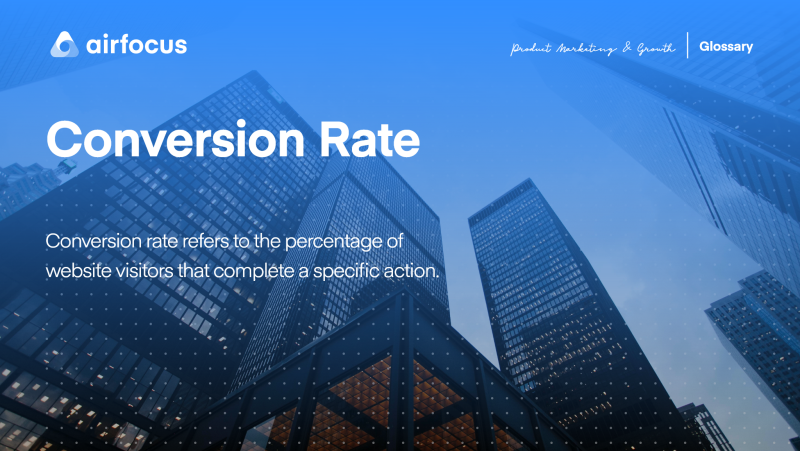Conversion Rate
What is a conversion rate
Definition of a conversion rate
Conversion rate refers to the percentage of website visitors that complete a specific action.
Typically speaking, conversion means that a visitor purchased something on your site. As long as the user takes the desired action, it is a conversion.
How to calculate the conversion rate
Conversion rate is fairly simple to calculate. Take the number of total visitors and the number of visitors that purchased something. Next, simply divide the number of people that purchased something by the number of total visitors.
If you had 5,000 purchases last month, and a total of 100,000 people, you have a 5% conversion rate.
In order to be as accurate as possible during your calculations. For that reason, it’s best to count each unique visitor only once. Counting each click on your website could result in very skewed calculations and very poor results.
Why is the conversion rate important?
From a business standpoint, it is very important to know how many people are buying your product. Furthermore, it is important to know how many people are aware of your product, and how many of those people are convinced that your product is right for them.
To dissect this topic a little further, conversion rate allows you to focus your efforts in the appropriate places. If you have a very high conversion rate, you may want to invest in more advertising to reach a broader target audience. If you have a lot of site traffic, but low conversion rates, you may want to invest in branding and marketing. Or perhaps your website design is lacking.
When should you calculate the conversion rate?
The frequency at which conversion rate should be calculated is completely different from company to company. Many settle for a monthly calculation, but there are many circumstances where it may need to be calculated more often or even less often.
The key is to have a short enough period so that you can track conversion across multiple periods. You don’t want to calculate conversion rate every six months if your entire measurement period is a year.
On the opposite hand, you want to use a long enough period that you get an accurate measurement. There are unpredictable fluctuations in the market every year, and they can greatly affect the conversion rate numbers if you don’t give the entire measurement period enough time to balance itself out.
Most importantly, your conversion rate calculations should consider your development cycles. If you have a major update each month, you should not wait until the end of the quarter to do conversion rate calculation.
Each update can produce a different result, and therefore a different conversion rate. Waiting until the period covers multiple major updates can prove catastrophic to your conversion rate.
How to improve the conversion rate
Depending on your company and your customers, there can be many ways to improve the conversion rate. However, there are 2 generic ways you can bring your conversion rate numbers up:
Think about what you’re offering
All the best advertising and marketing in the world doesn’t mean much if your product offer is not good. Take the extra time to consider what your product and what you can offer to your customers. If you create good offers with reasonable prices and solid quality, people will buy it.
Optimize your website
Whether we’re talking about site performance or structure, optimizing is always a quick way to increase conversions. Consider CTA locations, colors, designs, and even create a few landing pages to test different methods.
Like we stated above, there can be a lot of ways you can increase those conversion rates. What matters most, however, is that you offer something that people want, and you make it easy for them to get.

General FAQ

Glossary categories
Create effective product strategy

Experience the new way of doing product management








